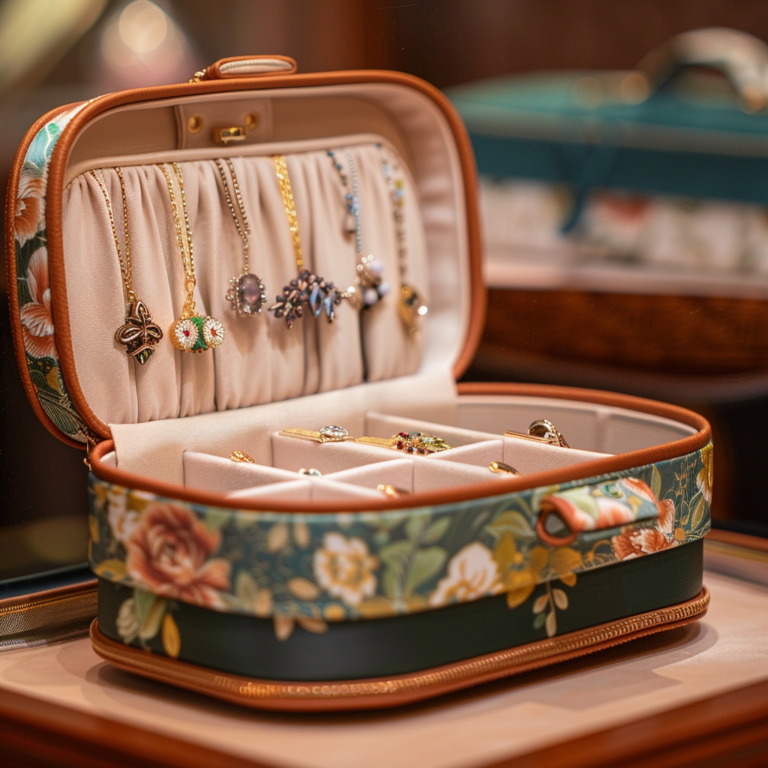Ultimate Guide to Birthstones: Discovering Their Secrets and Significance
Ultimate Guide to Birthstones
When I think about birthstones, I’m reminded of the vibrant tapestry of gems that represent each month of the year. These stones carry with them centuries of history and personal significance, making them more than just pretty ornaments. They offer a way to express identity, commemorate birthdays, or serve as tokens of good fortune. What’s fascinating is that, although birthstones are steeped in tradition, they’ve adapted with time, reflecting not just ancient lore but also modern preferences.

I’ve always enjoyed discovering the stories behind these alluring gems, and it’s intriguing to see how each stone’s unique qualities can connect to an individual’s birth month. Whether it’s the deep red of a January garnet or the cool blue of a December turquoise, the colors and characteristics of birthstones bring a special kind of personal touch to jewelry that resonates with many of us.
Delving into the significance of birthstones is like exploring a colorful world where each stone has its own narrative. I find that wearing my own birthstone not only is a statement of style but also feels like I’m carrying a piece of personal heritage with me.
The History and Origin of Birthstones
Throughout history, birthstones have been revered for their beauty and significance. From the adornments of ancient priests to the cherished talismans of the Middle Ages, these colorful gems have carried a wealth of tradition and lore.
Ancient Civilizations and Birthstones
The tradition of birthstones is believed to have originated with the breastplate of Aaron, described in the Book of Exodus. This garment featured twelve gemstones, each correspondingly representing one of the twelve tribes of Israel. Ancient civilizations, including the Greeks and Romans, also embraced the idea that specific gemstones carried special powers and designated them to correspond with the zodiac or calendar months. The Greeks, for example, adorned themselves with different gems to invoke protection from the gods, while Roman society linked gems with specific months for health and fortune.
Historical Texts and Lore
Moving through history, the connection between gemstones and birth months was further enriched by lore and religious texts. The practice of associating gems with the twelve apostles during the eighth and ninth centuries solidified the tradition of wearing a particular stone each month. The Latin term “gemma,” meaning precious stone, and the Greek word “methustos,” signifying protection against intoxication, both highlight how language shaped the mystique of gemstones in history. This evolution reflects how each stone came to be imbued with its own unique meaning and significance.
Birthstones by Month
Birthstones are more than just beautiful gemstones; they carry meanings and histories that date back centuries. Each month is represented by one or more gems that reflect the personality traits and values symbolized by that time of the year.
January: Garnet
The garnet is January’s birthstone, known for being a symbol of trust and friendship. This gem is not limited to the classic red, but comes in various colors that can suit any taste.
February: Amethyst
Amethyst, a variety of quartz with its majestic purple hue, is the birthstone for those born in February. It’s said to bring clarity of mind and is often associated with peace, courage, and stability.
March: Aquamarine and Bloodstone
March celebrates two birthstones, aquamarine and bloodstone. Aquamarine, with its oceanic tones, evokes serenity, while the powerful bloodstone is often linked to strength and vitality.
April: Diamond
April’s birthstone is the coveted diamond, renowned for its unparalleled durability and brilliance. This symbol of everlasting love is also thought to provide the wearer with better relationships and increase inner strength.
May: Emerald
The deep green emerald is the gem for individuals born in May. Cherished for its rich color and rarity, the emerald is emblematic of rebirth and love.
June: Pearl, Moonstone, and Alexandrite
Those born in June have a trio of birthstones to choose from: the classic pearl, the luminescent moonstone, and the rare alexandrite that changes colors under different lighting.
July: Ruby
July’s ruby is a token of passion, energy, and life. Its deep red color has been associated with power and vitality for centuries.
August: Peridot and Sardonyx
August is represented by the light green peridot and the lesser-known sardonyx. Peridot is often linked with good fortune, while sardonyx combines layers of sard and onyx to create a gem with beautiful bands.
September: Sapphire
The noble sapphire, with its range of blue shades, is September’s birthstone. It stands for wisdom, virtue, and good fortune.
October: Opal and Tourmaline
Opal and tourmaline are the multifaceted gems for October, each known for displaying an array of colors. Opal symbolizes hope and purity, while tourmaline is believed to inspire artistic expression.
November: Topaz and Citrine
Those born in November can claim the warm-hued topaz and citrine as their birthstones. While topaz can come in many colors, the most prized is the imperial topaz, and citrine is prized for its charming yellow and orange colors and is a symbol of vitality and health.
December: Tanzanite, Turquoise, and Zircon
Finally, December boasts three birthstones: the vibrant blue to violet tanzanite, the ancient turquoise, and the brilliant zircon. Each gem brings with it a unique representation of wisdom, prosperity, and success.
The Significance and Symbolism of Birthstones
Birthstones are more than just beautiful jewels; they carry deep meanings and are thought to possess unique energies. I’ll explore these cherished gems and how they are believed to influence our lives positively.
Cultural and Spiritual Meanings
Throughout different cultures, birthstones are revered for their mystical properties. For instance, many people believe that these gems can offer protection and healing. It’s said that wearing my birthstone could shield me from negativity and enhance physical well-being. Furthermore, specific stones are associated with bringing luck or amplifying personal energy.
- Tranquility and Strength: Some believe that birthstones like aquamarine bring inner peace and calm, while others like garnet could imbue me with strength and passion.
- Balance and Prosperity: Gems like peridot are thought to promote balance in my life, while sapphires might attract prosperity and good fortune.
These cultural beliefs suggest that each stone contains an essence that resonates with the individual qualities of the wearer.
Birthstones and Zodiac Signs
Associating birthstones with zodiac signs adds another layer to their significance. For example, those born under the sign of Leo might find that their assigned birthstone amplifies feelings of love and boldness corresponding to their fiery astrological nature.
- Leo: Peridot, said to spark love and protect against envious thoughts.
- Zodiac Energies: Aligning birthstones with my zodiac sign could help clear my mind, achieve mental clarity, emphasize natural beauty, or foster a sense of purity in relationships.
It’s fascinating how these gems connect to astrological configurations, possibly enhancing or balancing the energies that the stars bestow upon birthdays.
Physical and Healing Properties
When you think of birthstones, consider them more than sparkling gemstones; they are believed by many to be reservoirs of physical and emotional healing properties. My focus here is to unwrap the layers of color psychology and the role of these gemstones in alternative medicine.
Color Psychology
Color has significant psychological effects, and birthstones are a vivid tapestry of these hues. The color red, found in stones like garnet, is often associated with vigor and passion. Blue gems such as sapphire foster tranquility, while green ones like emerald represent harmony and growth. Yellow stones, including topaz, are linked to joy and mental clarity. Pink stones, for instance, rose quartz, tend to evoke feelings of love and comfort. Clear or colorless crystals, like diamond, signal purity and are thought to amplify energy.
Gemstones in Alternative Medicine
In the realm of alternative medicine, gemstones play a unique role. They are frequently incorporated into practices such as meditation and crystal therapy, aiming toward balance and healing. It’s interesting to note that specific gems are believed to be connected to different body systems. For example, the gemstone associated with physical benefits can support one’s overall well-being, with certain gems linked to bodily systems and organs. These beliefs stem from centuries-old traditions where crystals were indispensable in healing rituals and remain influential in today’s wellness landscape.
Birthstone Jewelry
When I’m selecting birthstone jewelry, whether it’s for myself or as a gift, I focus on finding a piece that connects with the wearer personally. Birthstone jewelry can range from necklaces and earrings to bracelets and rings, each set with a unique gem that represents the individual’s birth month. These precious stones are not just decorative; they often symbolize qualities like love, creativity, and positivity.
Choosing the Right Birthstone Jewelry
When I choose birthstone jewelry, I look for quality and meaning. For instance, diamonds in April birthstone jewelry aren’t just aesthetically pleasing; they are also a symbol of eternal love and wonder. Similarly, June’s pearls are associated with loyalty and harmony. Here’s a brief guide I use to match gemstones with the qualities I want to emphasize:
- January (Garnet): Loyalty and friendship
- February (Amethyst): Wisdom and courage
- March (Aquamarine): Serenity and clarity
- April (Diamond): Strength and love
- May (Emerald): Hope and success
- June (Pearl or Alexandrite): Harmony and loyalty
- July (Ruby): Vitality and royalty
- August (Peridot): Positivity and creativity
- September (Sapphire): Truth and sincerity
- October (Opal or Tourmaline): Healing and confidence
- November (Topaz or Citrine): Joy and affection
- December (Turquoise, Tanzanite, or Zircon): Friendship and success
Selecting the right setting and style—be it a minimalist ring or an ornate necklace—is just as crucial as the gemstone itself. I consider the recipient’s taste and lifestyle to make sure my gift is both beautiful and practical.
Caring for Birthstone Gems and Jewelry
Once I’ve found the perfect birthstone jewelry, keeping it in top condition is key. Each gem has its own requirements; some like pearls and opals are more delicate and need to be kept away from harsh chemicals and cleansers. Generally, I follow these simple steps to ensure longevity:
- Regular Cleaning: Use mild soap and warm water or a cleaner suitable for the specific type of gemstone.
- Safe Storage: Separate jewelry items to prevent scratching and store in a cool, dry place.
- Professional Checkups: Visit a jeweler annually to check for any damage or loose settings.
Remembering these guidelines helps me keep my birthstone gems and jewelry looking as lively and enchanting as when I first laid eyes on them.
Birthstones Around the World
The beauty and significance of birthstones have captured the hearts of people across the globe, with each culture adding its unique touch to how these gemstones are perceived and used. Let’s explore the diverse ways in which different parts of the world celebrate birthstones.
Geographical Variations in Birthstone Choices
Different regions often have their own distinctive lists of birthstones, reflective of local history and resources. In India, for instance, the traditional birthstone for July is the ruby, prized for centuries and often associated with vitality and strength. Known for their deep color and radiance, rubies have been a part of Indian culture and jewelry for generations, symbolizing passion and prosperity.
Meanwhile, Brazil, with its abundant natural resources, contributes a rich variety of gemstones to the world’s selection of birthstones. Brazilian tourmaline, for example, showcases a rainbow of colors, enabling it to resonate with the energies and happiness associated with multiple birth months. The creativity and joy in Brazilian gemstone cutting and setting are evident in the country’s vibrant jewelry industry.
Birthstones and Global Traditions
Across cultures, birthstones are often integral to celebrating one’s identity and marking life’s milestones. Many societies hold the belief that birthstones can channel positive energies and even influence one’s purpose in life.
For instance, some global traditions assign protective qualities to birthstones, suggesting that wearing them can shield one from negativity and foster a sense of joy. It’s not uncommon for families to pass down birthstone jewelry as heirlooms, connecting generations through a tangible expression of culture and history.
From cultural rituals to daily wear, the global fascination with birthstones reflects humanity’s shared love for beauty and the enduring search for meaning through the treasures of the Earth.
How to Purchase and Evaluate Birthstones
When I look for birthstones, I ensure authenticity and value are my top priorities. I’ll guide you through how to identify genuine gems and what you need to understand about their pricing and value.
Identifying Authentic Gems
To begin, it’s critical for me to check if a gemstone is authentic to guarantee it’s a treasure worth investing in. Here’s what I focus on:
- Clarity: Clarity refers to the absence of inclusions or blemishes within or on the surface of the stone. I examine the birthstone under a magnifying glass to spot any imperfections. Gems like quartz might have natural inclusions but should still maintain a level of translucency.
- Equipment: I often utilize tools like a loupe or a microscope to closely inspect stones. It allows me to see aspects of the stone that could indicate its authenticity, such as specific inclusions or growth patterns typical for stones like agate.
Understanding Pricing and Value
Next, I delve into how to measure the value and price of birthstones effectively:
- Market Value: I check current market values to get an idea of what gemstones are selling for. Factors such as rarity, size, and desirability come into play.
- Investment Potential: Some birthstones, due to their rarity and durability, might serve as an investment. I think about whether the stone has the strength to maintain or increase in value over time.
- Quality Grading: Quality grading systems help me assess the value based on aspects like cut, color, clarity, and carat weight. Higher grades typically indicate higher value; however, I keep in mind this could mean a higher price point.
Purchasing birthstones can be quite the journey, but with these key points in mind, I always feel more confident in choosing a stone that holds both personal significance and financial worth.
Frequently Asked Questions

I’ve compiled the most common inquiries about birthstones to help you understand their significance and choose the right one for you or as a gift.
What are the different birthstones for each month?
Each month is represented by one or more gemstones; for example, January’s birthstone is garnet, while December’s choices include turquoise, zircon, and tanzanite.
How can I find out which birthstone corresponds to my birth month?
You can easily determine your birthstone by looking at modern birthstone lists which assign a specific gemstone to each month of the year.
What are some of the historical meanings behind various birthstones?
Many birthstones have roots in ancient history with various meanings; for instance, peridot, is thought to protect its wearer from harm and symbolizes peace and harmony.
Is there a particular birthstone that is considered to be the most valuable or rare?
While all birthstones have their worth, some, like the diamond for April, are typically more valued due to their rarity and the role they play in jewelry markets.
Can wearing my birthstone bring me good luck, and if so, how?
Some people believe that wearing their birthstone can bring them good luck, personal strength, or health, although these effects vary by individual belief and are not guaranteed.
What are some tips for choosing the perfect birthstone jewelry for a gift?
When selecting a birthstone as a gift, consider the recipient’s taste in jewelry, the durability of the stone, and the color that best suits them. Opt for a piece that reflects their style and can be worn frequently.












